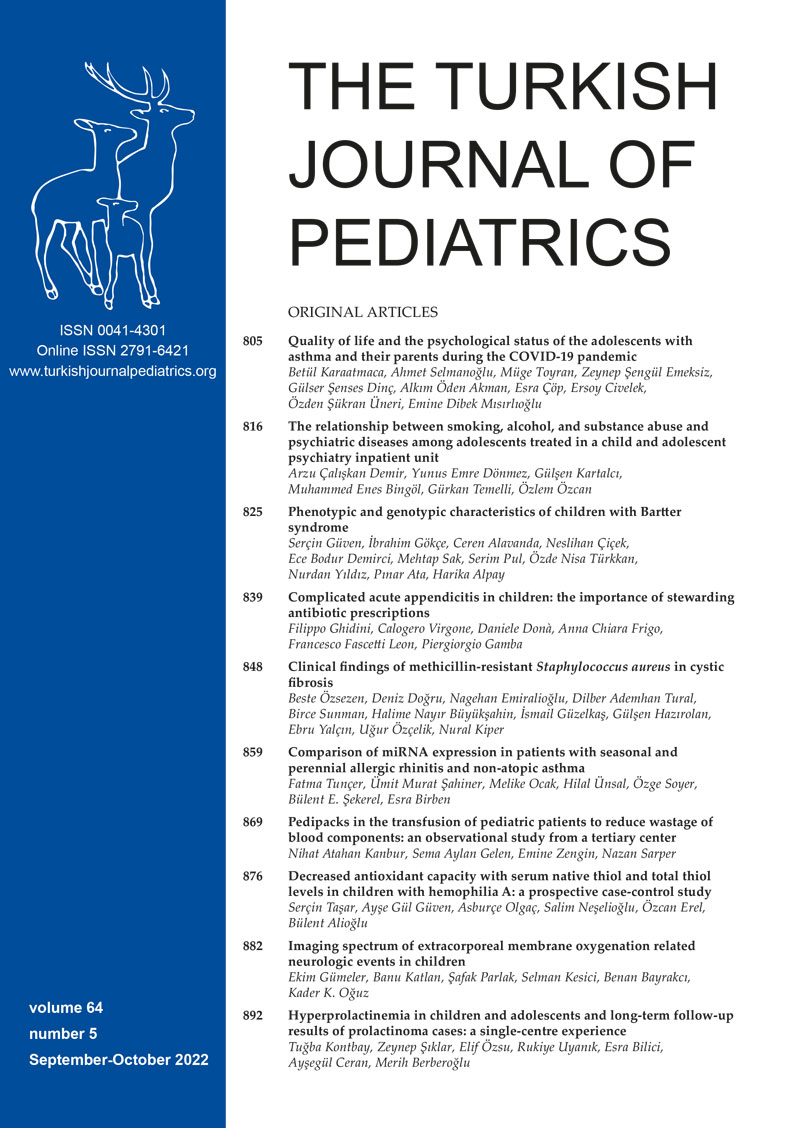Abstract
Introduction. Bartter syndrome (BS) is a group of autosomal-recessive tubular disorders and it is classified into five genetic subtypes. BS can also be classified by phenotype (antenatal, classic). Patients with mutations in the same gene can present different phenotypes. In the present study, target gene sequencing was performed to evaluate the genotype-phenotype relationship.
Methods. Biochemical, clinical and renal ultrasonography results were collected at presentation and the last clinic visit. Genetic analyses were performed. The findings of patients with classical BS (cBS) and antenatal BS (aBS) at presentation and the last visit were compared.
Results. Our study included 21 patients (12 female, 57.1%) from 20 families with BS. The median age at diagnosis was 8 months and the median follow-up period was 39 months. The most frequent complaint was growth failure. We have found 18 different types of mutations in four genes, including nine in the CLCNKB gene, seven in the SLCA12A1 gene, one in the KCNJ1 gene and one in the BSND gene. In ten patients, nine different types of CLCNKB gene mutations were detected, five of them were novel. Seven different mutations in the SLC12A1 gene were detected in eight patients, five of them were novel. Compared to patients with aBS and cBS, prematurity was significantly higher in the group with aBS. Nephrocalcinosis was present in only one patient with cBS, all the ten hypercalciuric patients with aBS had nephrocalcinosis at the time of diagnosis and the last visit. The mean height standard deviation score (SDS) of patients with aBS were significantly lower than the cBS group at the time of presentation. The mean weight SDS at the time of presentation was worse in patients with aBS than in patients with cBS. The mean plasma potassium and chloride concentrations were significantly lower in the patients with cBS at the time of diagnosis.
Conclusions. This investigation revealed the mutation characteristics and phenotype-genotype relationship of our patients and provided valuable data for genetic counseling.
Keywords: Bartter syndrome, genotype, mutation, phenotype
Copyright and license
Copyright © 2022 The Author(s). This is an open access article distributed under the Creative Commons Attribution License (CC BY), which permits unrestricted use, distribution, and reproduction in any medium or format, provided the original work is properly cited.














